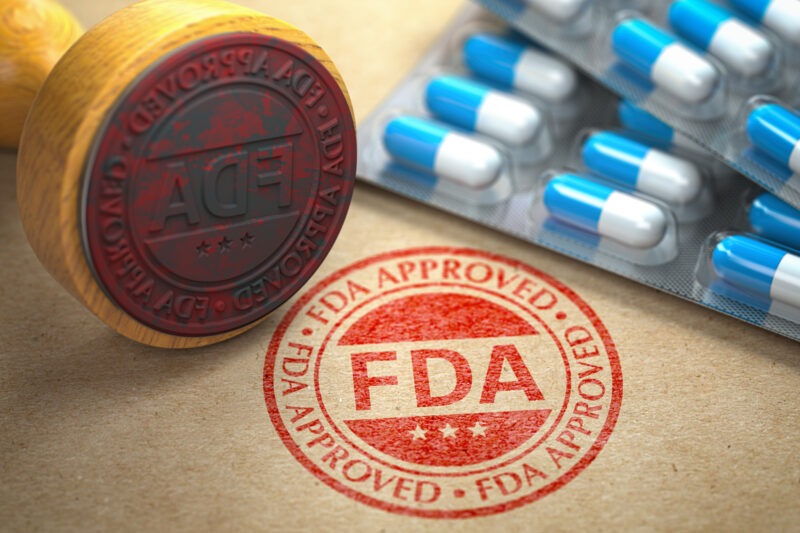Up or Down: The Key Trends in New Drug Approvals
How did the industry fare with new drug approvals in 2023? What do the numbers show? Are approvals in pace with prior years, and what is the mix between small molecules and biologics? Which companies and products made the mark?
What the numbers show
Last year (2023) saw an uptick in new drug approvals compared to 2022, which was a recent dip in new drug approvals. The US Food and Drug Administration’s Center for Drug Evaluation and Research (CDER) approved 55 new molecular entities (NMEs) and new therapeutic biologics in 2023, a 49% increase in the number of new drug approvals compared to 2022, when 37 new drugs were approved. The 55 new drugs approved in 2023 by FDA’s CDER was in line with recent years. In 2021, 50 NMEs and new therapeutic biologics were approved by FDA’s CDER and 53 in 2020. The 55 new drugs approved in 2023 represented the second highest level of approvals in the past decade, except for 2018 when 59 new drugs were approved.
First-in-class drug approvals
Aside from just the overall number of new drug approvals, product innovation can also be evaluated in terms of the number of new drug approvals classified as “first-in-class,” which FDA’s CDER characterizes as drugs with a different mechanism of action than existing drugs. In 2023, the percentage of new drugs classified as first-in-class declined relative to levels seen in 2022 and 2021 but was on par with years prior to that. CDER identified 20 of the 55 novel drugs approved (36%) in 2023 as first-in-class. In 2022 and 2021, first-in-class drugs accounted for more than half (54%) of new drug approvals in both years. In 2022, CDER identified 20 of the 37 novel drugs as first-in-class, and of the 50 new drugs approved by the FDA’s CDER in 2021, 27 were characterized as first-in-class drugs. The 36% of first-in-class new drug approvals in 2023 was more in line with prior years, with 2022 and 2021 showing a sizable uptick on a percentage basis comparative to recent prior years. First-in-class drugs accounted for 40% of new drug approvals in 2020, 42% in 2019, and 32% in 2018.
Orphan drugs
Another trend continued in 2023 was the high percentage of new drug approvals that were for orphan drugs or drugs to treat rare diseases (defined by FDA as diseases that affect less than 200,000 people in the US). In 2023, more than half of the novel drug approvals by FDA’s CDER were drugs to treat rare or orphan diseases, which continues a recent trend in which more than half of new drug approvals were for orphan drugs. In 2023, 28 of CDER’s 55 novel drug approvals (51%) received orphan drug designation. In 2022, 20 of 37, or 54% of novel drug approvals by FDA’s CDER were for rare diseases. In 2021, 26 of CDER’s 50 new drug approvals (52%) were approved to treat rare or orphan diseases, and in 2020, 58%, or 31, of the 53 novel drug approvals were orphan drugs.
Small molecules versus biologics
Another important trend is to look at the product mix of new drug approvals. In 2023, FDA’s CDER approved 17 new therapeutic biologics, which represented 31% of new drug approvals and 38 small-molecule products or 69% of new drug approvals. The percentage of small-molecule approvals in 2023 was in line with recent year, except in 2022, which represented a recent low. In 2022, 59% of the new drug approvals by FDA’s CDER were small molecules or 22 of the 37 new drug approvals in 2022. Between 2018 and 2021, small molecules averaged 74% of new drug approvals. In 2021, small molecules represented 72% of new drug approvals, 75% in 2020, 79% in 2019, and 71% in 2018.
The decrease in small molecules’ share of new drug approvals in 2022 was largely due to the overall decline in new drug approvals in 2022 and a corresponding decline in small-molecule drug approvals and a rise in new biologic drug approvals. In 2022, FDA’s CDER approved 22 new small-molecule drugs and 15 new biologics. The 17 new biologics approvals in 2023 surpassed 2022 levels and matched a recent high in 2018, when 17 new biologics were also approved by FDA’s CDER. The 17 new biologic drug approvals in 2023 far exceeded approvals of new therapeutic biologics by FDA’s CDER of 14 in 2021, 13 in 2020, and 10 in 2019.





